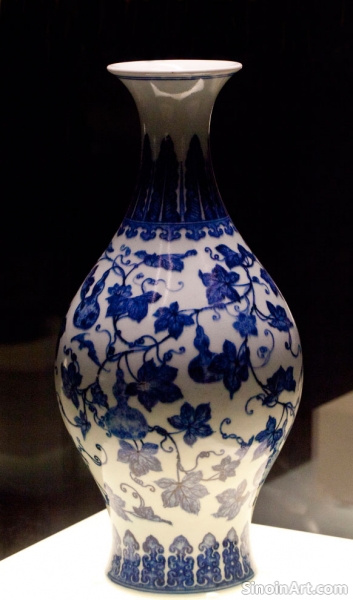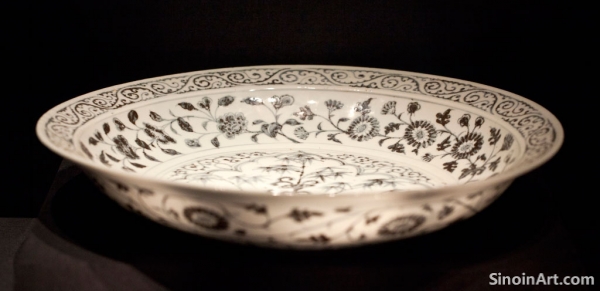Beyond Blue and White: Other Yuan Ceramic Styles
|
While blue and white porcelain is undoubtedly the most famous ceramic style of the Yuan Dynasty, it is important to acknowledge the other equally significant forms of pottery production of the era. These less-celebrated wares offer valuable insights into the diversity and richness of Yuan ceramic traditions. While blue and white is the most famous product of the period, there is a lot more to Yuan pottery than just that.  One notable style is "Shufu ware," a creamy-white porcelain with a subtle, unctuous glaze. This ware is often characterized by its moulded or carved designs and its delicate appearance. Shufu ware offers a distinct contrast to the bold blue and white. These pieces show a different set of aesthetic choices.  Other Yuan ceramic styles include Cizhou ware, which featured boldly painted designs in iron-brown or black over a white slip. This style is characterized by its more rustic, folk art aesthetic and its sturdy forms. Cizhou wares have a vibrancy and a rustic feel that is all their own.  Longquan celadon also continued to be produced during the Yuan Dynasty. This style is renowned for its thick, jade-like green glaze and its often sculptural forms. The celadon of the era continued to be highly prized throughout the world. The diversity of these Yuan ceramics demonstrates the breadth of creative output during this time. Although often overshadowed by blue and white, these other styles provide a more complete picture of the period's ceramic achievements and artistry. They demonstrate the full range of creativity during the Yuan Dynasty. |
Tag : Yuan ceramics, Shufu ware, Cizhou ware, Longquan celadon, Chinese pottery
Related information
- The Kilns of Jingdezhen: The Epicenter of Yuan Dynasty Porcelain Production
- The Role of Minorities in Yuan Dynasty Porcelain Production and Trade
- The Role of the Imperial Court in Yuan Dynasty Porcelain Production
- The Role of Yuan Dynasty Porcelain in Funeral and Burial Practices
- The Influence of Yuan Dynasty Porcelain on Contemporary Artists
This article focuses on Jingdezhen's role as the central porcelain production hub during the Yuan Dynasty. It explores its kiln organization, manufacturing processes, and enduring influence on ceramics.
This article explores the often overlooked role of minority groups in the production and trade of Yuan Dynasty porcelain, acknowledging their likely contributions to various stages of the process and their influence on the diverse cultural landscape of the period.
This article examines the role of the Yuan Dynasty imperial court in porcelain production, exploring how its patronage and unique aesthetic preferences shaped the styles and scale of ceramic creation during the era.
This article explores the use of Yuan Dynasty porcelain in funeral and burial practices, examining its significance as grave goods intended to accompany the deceased, providing insights into Yuan beliefs about death, the afterlife, and the symbolic meaning of these ceramics.
This article explores the influence of Yuan Dynasty porcelain on contemporary artists, highlighting its impact on ceramic design, use of underglaze blue, and the integration of traditional techniques with modern artistic approaches.